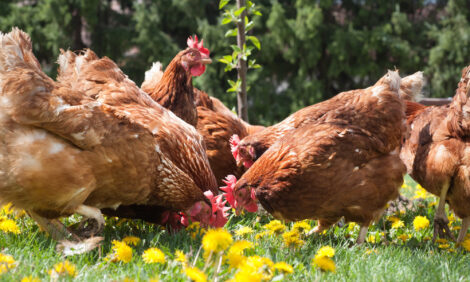



Welfare Rule Doubles California's Egg Prices
US – Intense market debate reignited in California after the cost of eggs doubled as farms realigned to new laws limiting layer bird stocking rates.Initial price forecasts tipped the rule to lift prices anywhere between ten and 40 per cent within the state, with the USDA food price outlook putting eggs at 2.5 to 3.5 per cent across the US for 2015.
Made active on 1 January 2015, the Prevention of Farm Cruelty Act, passed in November 2008, requires a minimum of 116 square inches per layer, around 73 per cent more space than in a conventional system.
Great speculation has taken place over how the rule will impact the egg markets, both state-wide and nationally. Also, constitutional concerns have been voiced over the right for California to demand standards on external suppliers, while some say the new laws do more harm than good to birds.
The National Association of Egg Farmers have been vocal, responding to a variety of opinion editorials giving coverage of broadcasted debates.
Political debate has raged around the ruling not only impacting poultry welfare in California, but demanding the same standards on eggs coming into the state from elsewhere.
The market effect means Californians, who voted over 63 per cent in favour of the rule, have paid $3.16 for a dozen jumbo eggs this year, above a price of $1.18 a year ago.
This is according to reports of monitoring by the US Department of Agriculture, which, in its latest egg market report, revealed California eggs are 90 cents higher at $2.56.
Furthermore, it confirmed slacker egg demand, stating: “Market activity is slow to moderate in California, while moderate to active in the remaining regions.”
Farmers, meanwhile, have two options – invest or downscale, according to a special report compiled by the Egg Industry Centre, University of Iowa.
The report said those that invest in new buildings can maintain similar layer numbers on-farm, and added: “While there are various ways to achieve these requirements, all of them lead to a higher cost of production than it takes to produce table eggs in the conventional system.”
This was contrasted against downsizing which entails less output as fixed costs; such as grading machines, machinery and investment in land and roads become higher.
The Wall Street Journal described the regulation: “The state’s latest animal-rights march is levying a punishing new food tax on the nation’s poor.”
In December, the USDA food and price outlook said of the welfare rule: "While this may cause higher prices in California, prices elsewhere may face downward pressure if out-of-State egg producers choose not to alter their facilities and look elsewhere within the US to sell their eggs."









